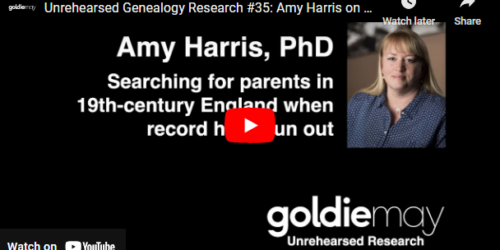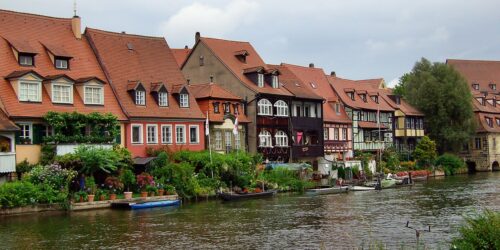Where Are the Daughters?
Editor’s Note: This blog post from Liz Kennington was originally published on February 2, 2019 and is reprinted here with her permission.
One of the difficult things about doing family history work is finding all the women in the family. Even if you don’t know  a wife’s maiden name, you at least have a clue when there is a “Mrs” mentioned. Women have often been discounted in records, especially the farther back you go. This is especially true of the daughters. How do you research the daughters in a family if you don’t know the names they were using?
a wife’s maiden name, you at least have a clue when there is a “Mrs” mentioned. Women have often been discounted in records, especially the farther back you go. This is especially true of the daughters. How do you research the daughters in a family if you don’t know the names they were using?
If we want to create a more complete view of a family, we have to research the entire family, including the women. This can be a bit of a challenge since women are not always included in the records. Why? Because records were created for and by men. In western culture women also change their names each time they marry. This often leads to problems keeping track of them because you may not even know the name you’re looking for! Amy Johnson Crow suggests several places you can look to find these illusive women.
The first is the father’s probate. We can use this record to our advantage because it has been created for the father in the family. Look at the father’s will or probate to see how he lists the daughters. At the least you may discover how many daughters were in the family, and you might also learn their names. But be prepared to see some of those daughters listed as Mrs. John Jones! Some daughters might be listed by first name only even if they were married.
If the father didn’t create a will, look at the final distribution. The important thing with a final distribution is that the daughters will be listed with the name they were going by at that time. If daughters are getting anything from the estate, they will be listed by the current name which could be a married name. Statements of final distribution can be found in a probate packet or probate case file at the county level.
Another place to look for information about the father, which often includes daughters’ names, are land and court records. If the father died without a will and he owned land, then that land and the rest of the estate will be divided up according to the laws of inheritance in that place at the time. This would necessitate a partition suit where all the heirs of the state would have to sign off on selling the land. Another way to approach the problem of finding the daughters is to research the other children in the family. We know that the sons are likely to show up in records so use that to find the sisters. Obituaries are a great source of names, especially the sisters of the deceased. Even if the sisters are listed by married names, at least you have a clue. Also look for siblings in county histories.
If you don’t know the name you looking for, try searching databases by the parents’ names and leaving the person blank. This nameless search strategy can be used when searching death certificates online. Put in the father’s last name and the maiden name of the mother, leaving the name of the deceased blank. With any luck you will find several people in the family. A word of caution: The information on a death certificate is only as accurate and complete as the informant’s knowledge. One way around this is to do a second search using just the father’s last name and the first name of the mother. This way if the informant didn’t know the mother’s maiden name, you are more likely to find children.
Looking beyond your direct ancestor will help you create a more complete picture of the family and hopefully yield those women in your tree. [Source: Amy Johnson Crow, “Finding All the Daughters in the FamilyTree,” 20 September 2018]





